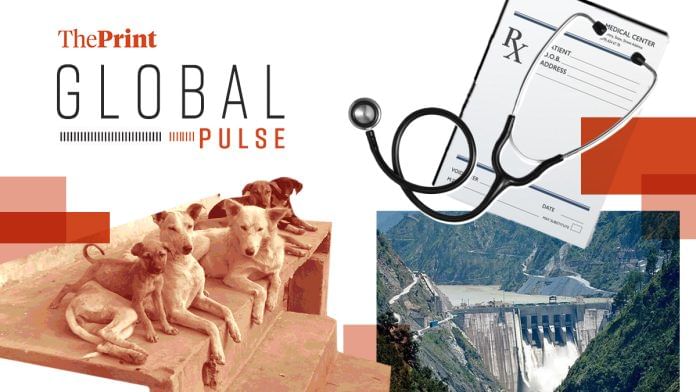New Delhi: After wild boars in Berlin and capybaras in Buenos Aires, it is street dogs in Delhi that are making their way to the headlines, says The Economist. Although in India, it’s not just dogs. Stray cows, monkeys and pigeons also contribute to the problem with animals in urban centres.
“As India’s cities expand, so conflict between humans and beasts is growing,” notes the report, adding that India also sees the highest number of snake bite deaths in the world.
“Why do so many animals call urban India their home? One reason is that cities have been expanding rapidly into habitats that used to be theirs alone. Consider Bangalore. In 2008 only about 50% of land within its city limits was classed as ‘built-up’; today roads or buildings cover around 88% of it. That has been catastrophic for some creatures. But others have found ways to adapt,” it says.
“The People for Animals Wildlife Hospital in Bangalore used to get reports of snakes only on the outskirts of the city,” says Colonel Dr Navaz Shariff, its chief veterinarian. “Now we get reports of hatchlings everywhere.”
But India’s animal problems also have social and political roots, says The Economist, adding that animals are “well-protected, not just by law” but by Indian tradition and culture.
“In recent weeks, official impotence and public resistance have combined to hobble several big animal-control plans. In August, protests erupted in Mumbai when officials tried to shut down pigeon-feeding stations on public-health grounds (pigeons can spread lung disease, among other risks),” the report notes.
“Members of the Jain religion, which advocates non-violence towards all living things, refused to abide by the rules. One pacifist monk even threatened to take up arms against the decision. Jains are a small minority, but well represented among India’s social and economic elite. And politicians avoid offending religious sentiments, because that is a sure way to lose votes,” it adds.
Geeta Pandey reports in the BBC the Punjab and Haryana High Court has ruled that legible handwriting—when it comes to a doctor’s prescription—is a fundamental right.
“Jokes around the notoriously bad handwriting of many doctors that can only be deciphered by pharmacists are common in India, as around the world. But the latest order emphasising the importance of clear handwriting came recently from the Punjab and Haryana High Court which said that ‘legible medical prescription is a fundamental right’ as it can make a difference between life and death,” says the report.
The case before the court wasn’t about handwriting but about allegations of rape and forgery. However, when the judge looked at the medio-legal report part of the matter, he found it to be “incomprehensible”.
“It shook the conscience of this court as not even a word or a letter was legible,” he wrote in the order, seen by the BBC.
The judge directed the government to include handwriting lessons in the medical school curriculum and set a two-year timeline for rolling out digitised prescriptions.
In Bloomberg, Rajesh Kumar Singh reports that as part of efforts to hasten the approval of hydroelectric projects, India’s Central Electricity Authority (CEA) is looking to “hire external experts”—essentially, to “outsource geological investigations”. The report highlights that various government agencies meant for project clearances are “short-staffed”.
“Projects have suffered delays despite approval from the CEA due to social resistance, resulting in higher electricity prices. As of December, India had almost 30 gigawatts of CEA-approved hydropower units that hadn’t started construction, many cleared more than a decade earlier. While many are waiting for environmental clearances or undergoing design revisions, some are being dropped altogether,” it adds.
(Edited by Nida Fatima Siddiqui)
Also Read: Social media popularity down, Bihar elections loom as a litmus test for PM Modi—global media






